Jan Bellows, DVM, Board Certified Veterinary Dentist™, Dipl. ABVP (canine and feline)
VOHC logo
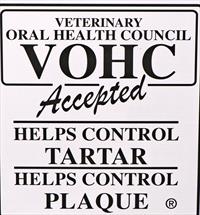
brokenRupper4thpremolar
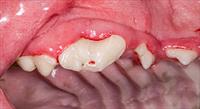
Fractured right upper fourth premolar with pulp exposure in a dog given deer antlers to chew on. Photo courtesy of Dr. Jan Bellows, DVM, Board Certified Veterinary Dentist™, Dipl. ABVP (canine and feline)
Introduction
There are simple, down-to-earth steps to ensure your pet's dental health is within reach. Neglecting your pet's oral hygiene can lead to pain and health problems. Here are some easy-to-follow tips on how to care for your pet's teeth without overwhelming yourself or your furry companion.
Dental-Friendly Treats and Toys
Start by incorporating dental-safe and effective treats, chews, and toys into your pet's daily routine. These can be a fun and effortless way to promote dental health. Look for treats and toys designed to clean teeth and massage gums while your pet chews on them.
When choosing treats and toys, ensure they are appropriate for your pet's size and chewing habits. These can be a tasty, practical solution that helps reduce plaque and tartar buildup.
The Veterinary Oral Health Counsel was created over 25 years ago and accepts products that decrease the accumulation of plaque or tartar. VOHC.org hosts a constantly updated list of over 70 dog and 20 cat products.
Deer antlers, bones of any type, dried Yak milk, and nylon toys must be avoided because they can break teeth, exposing the tooth’s nerves.
dental wipe
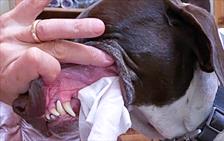
A dental wipe was rubbed along the cheek teeth to remove plaque. Photo courtesy of Dr. Jan Bellows, DVM, Board Certified Veterinary Dentist™, Dipl. ABVP (canine and feline)
Dental Gel or Spray
If your pet isn't a fan of toothbrushes or you find brushing challenging, consider using dental gels or sprays. These products are easy to apply and can help maintain oral hygiene. They contain enzymes or antimicrobial agents that work to reduce plaque and tartar. Look for the Veterinary Oral Health Seal of Acceptance on the product container. The products that have achieved acceptance status are considered safe and effective in decreasing the accumulation of plaque and/or tartar.
Follow the instructions on the product label to apply the gel or spray to your pet's teeth and gums. It's a hassle-free alternative that can significantly impact your pet's dental health.
Dental Wipes
For some pets, using dental wipes can be a practical option. These pre-moistened wipes are designed to be gentle on your pet's gums while effectively cleaning teeth. Dental wipes are especially useful for pets that resist brushing or have a small mouth.
To use dental wipes, gently wrap the wipe around your finger and rub it along the outer surfaces of your pet's teeth. Make sure to choose safe wipes for pets and free from harmful ingredients.
dentalstrip
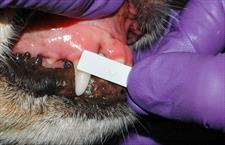
Oral strip being applied to the gumline. Photo courtesy of Dr. Jan Bellows, DVM, Board Certified Veterinary Dentist™. Dipl. ABVP (canine and feline)
Stripresult
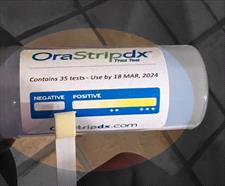
The positive result confirms the periodontal disease and the need for immediate dental care. Photo courtesy of Dr. Jan Bellows, DVM, Board Certified Veterinary Dentist™, Dipl. ABVP (canine and feline)
Dental Water Additives
Another practical tool for maintaining your pet's dental health is a dental water additive. These liquid solutions that you add to your pet's drinking water work to control plaque and tartar. While they are not a substitute for brushing and professional cleanings, they can be a convenient addition to your pet's daily routine.
Follow the manufacturer's instructions for the correct dosage and ensure your pet can access the treated water throughout the day. Also, look for the VOHC seal of acceptance on the product you choose to ensure safety and efficacy.
Regular Check-ups
Twice yearly veterinary dental check-ups are crucial for your pet's dental health to examine your pet's teeth and gums. As needed, professional dental cleanings under anesthesia performed by a veterinarian are the most effective way to remove stubborn tartar and address underlying dental issues.
During these check-ups, your veterinarian can identify dental problems early on, such as infections or gum disease. Early detection can prevent these issues from escalating into more severe health problems. Many veterinarians employ a thiol detection strip (OraStripdx®) in the exam room to help identify the presence of periodontal disease. The positive result confirms the periodontal disease and the need for immediate dental care.
At Home Checks
Be vigilant for any signs of dental problems in your pet. Keep an eye out for the following warning signs:
- Bad breath
- Drooling excessively
- Difficulty eating or chewing.
- Swollen, bleeding, or red gums.
- Loose or broken teeth
- Changes in eating habits
- Pawing at the mouth or face
- Weight loss
If you notice any of these signs, consult your veterinarian promptly.
Conclusion
Practical dental care for your pet doesn't have to be complicated or time-consuming. Incorporating dental treats, toys, gels, sprays, wipes, and water additives into your pet's routine can positively impact their oral health. Remember to schedule regular check-ups with your veterinarian and be attentive to any warning signs of dental problems. Your pet's dental well-being is an essential aspect of their overall health.